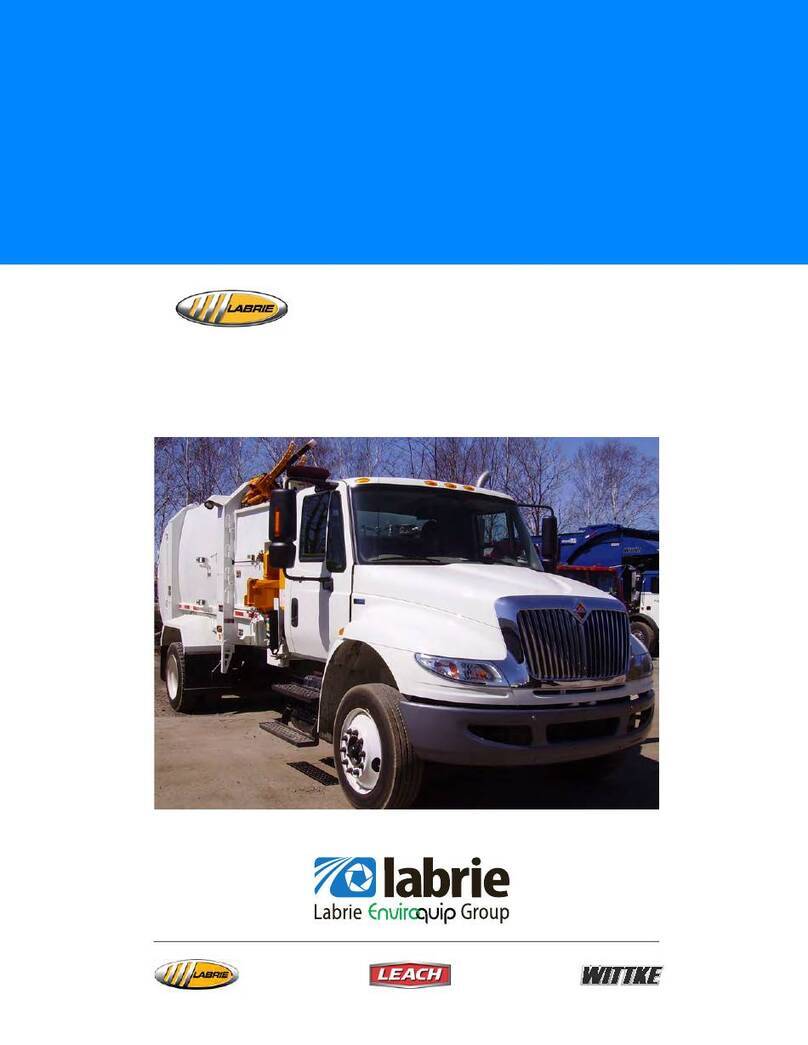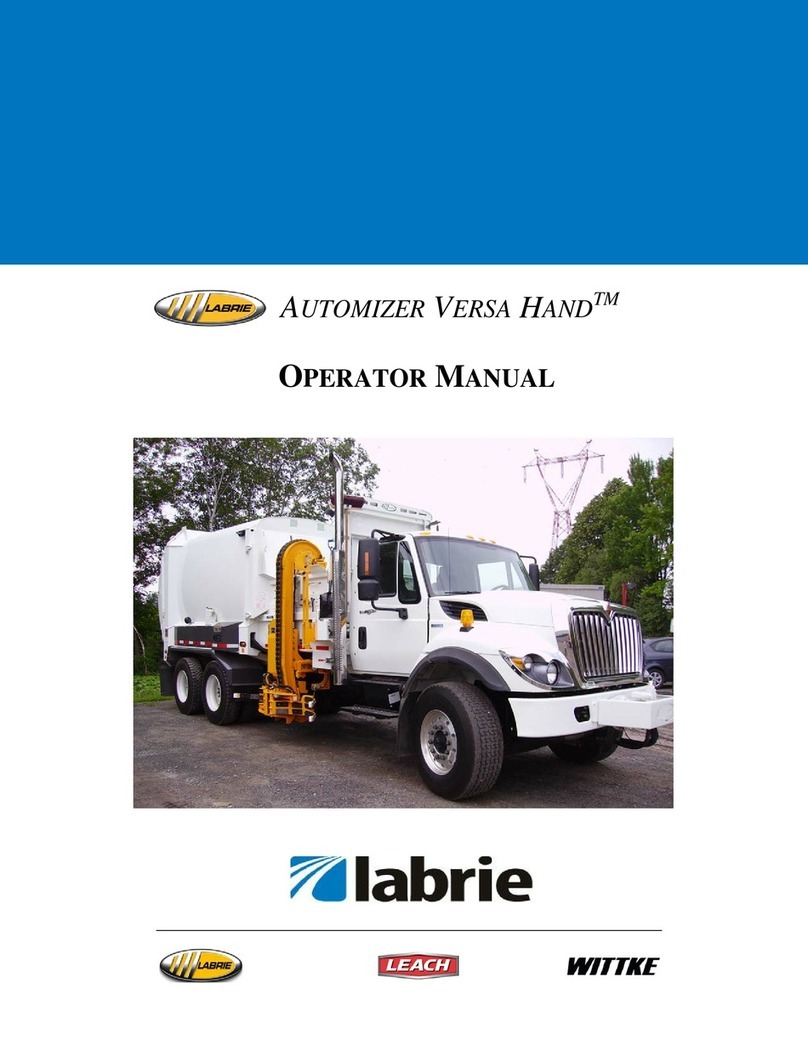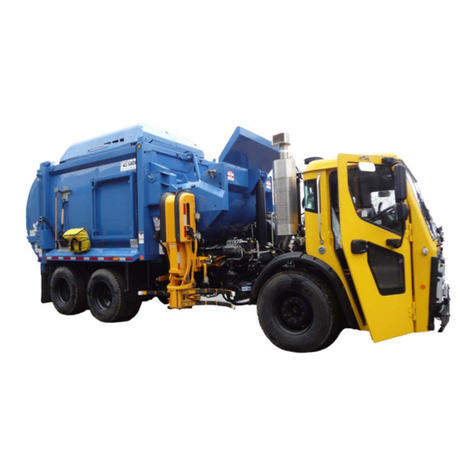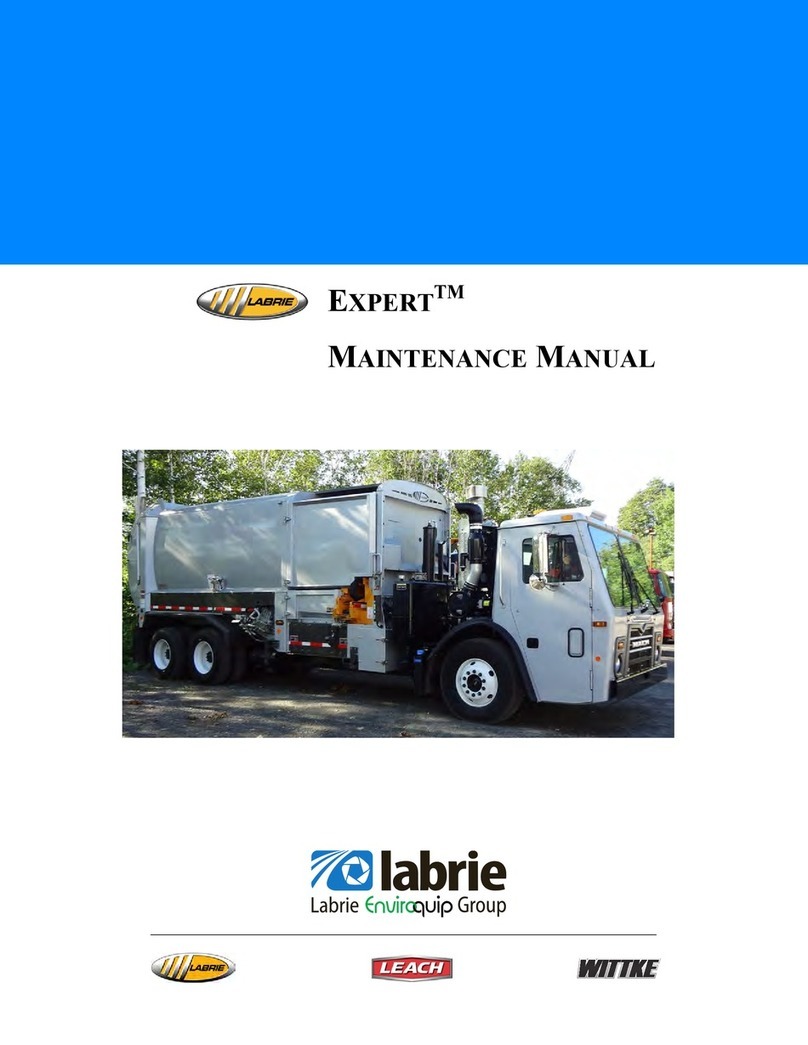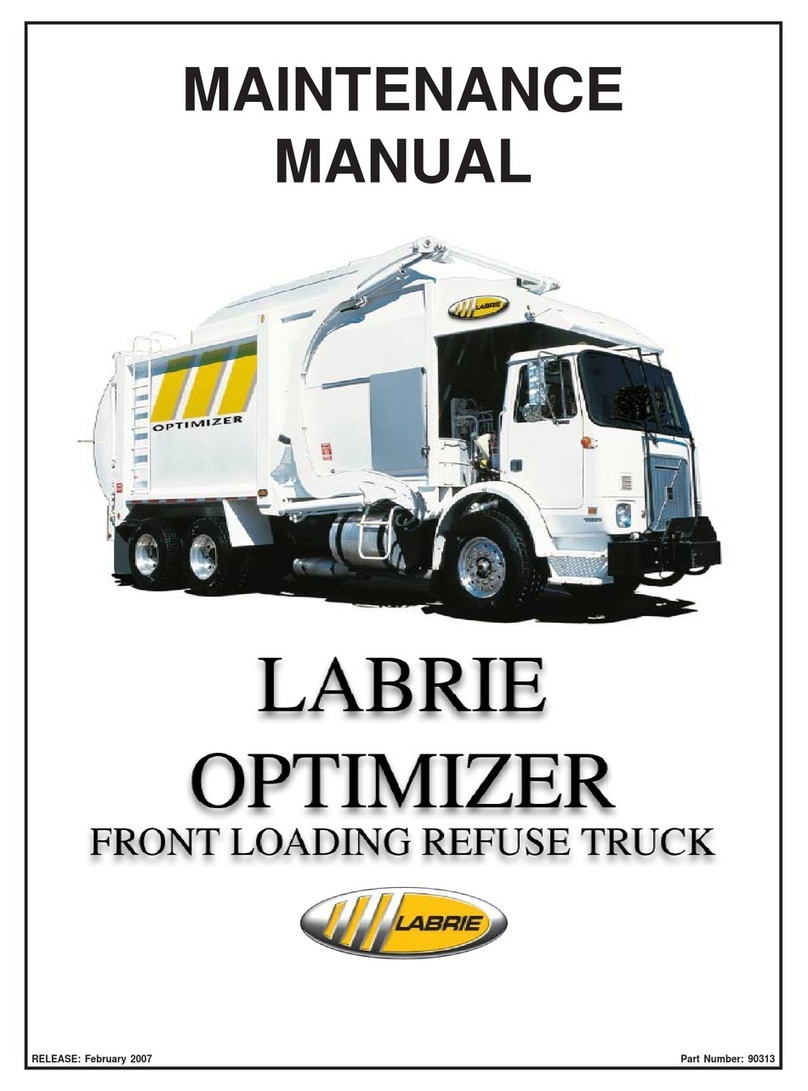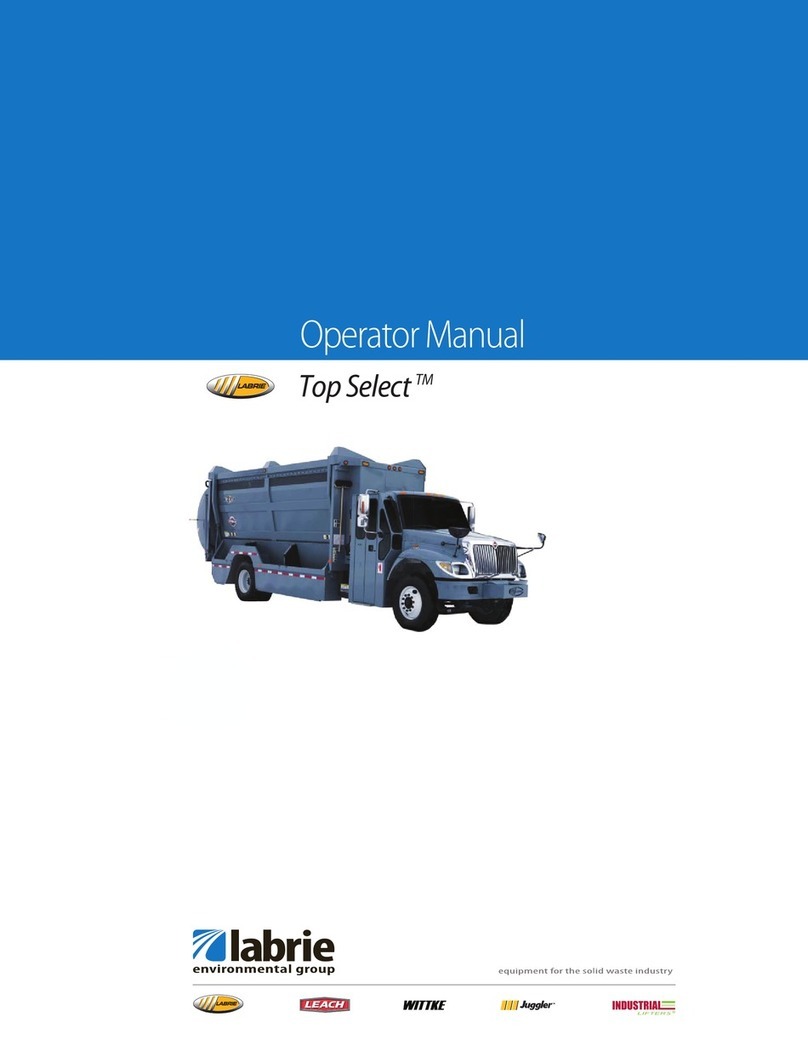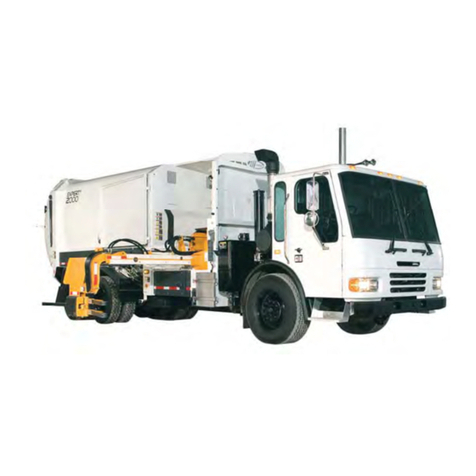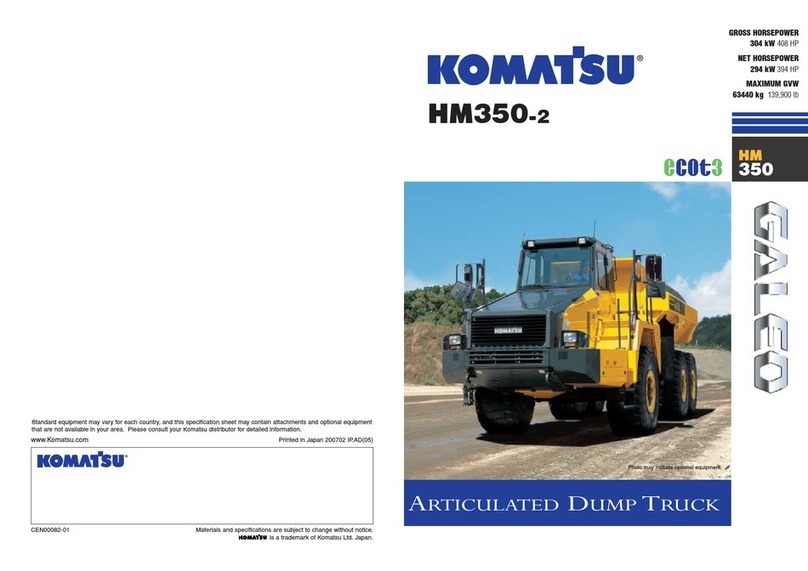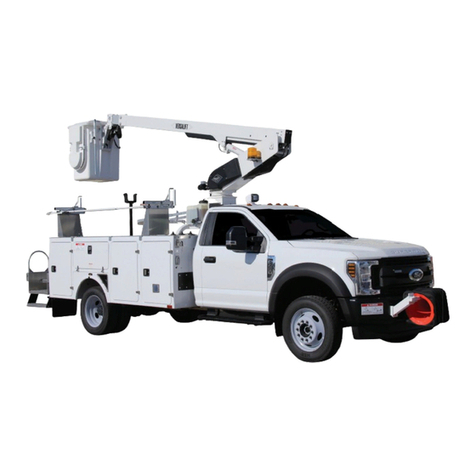
LABRIE EXPERT 2000
OPERATOR’S MANUAL
Table of contents
3.4 LOADING, COMPACTING AND UNLOADING .......................................................... 39
3.4.1 PLANNING YOUR ROUTE ........................................................................................... 39
3.4.2 SAFETY WHEN USING PACKING SYSTEM ............................................................. 39
3.4.3 HOPPER DESCRIPTION ............................................................................................... 40
3.4.4 PACKING RAM DESCRIPTION ................................................................................... 40
3.4.5 CRUSHER PANEL .......................................................................................................... 41
3.4.6 BAGS ............................................................................................................................... 41
3.4.7 RECYCLING BOXES ..................................................................................................... 42
3.4.8 ROLLER CARTS ............................................................................................................. 43
3.4.9 BREAKING THE LOAD ................................................................................................ 44
3.4.10 STANDARD COLLECTION PROCEDURE ................................................................. 45
3.4.11 CAB FOLDING DOOR .................................................................................................. 46
3.4.12 LOADING CORRECTIVE ACTIONS ........................................................................... 48
3.4.13 EMERGENCY ACTIONS ............................................................................................... 48
3.4.14 PACK ON THE GO ......................................................................................................... 49
3.4.15 STANDARD UNLOADING PROCEDURE ................................................................... 49
3.4.16 UNLOADING CORRECTIVE ACTIONS ..................................................................... 52
3.4.17 UNLOADING EMERGENCY ACTIONS ...................................................................... 53
3.4.18 HOPPER DAILY CLEANING ........................................................................................ 54
3.4.19 CHASSIS DAILY CLEANING ....................................................................................... 55
3.5 COOL HAND AUTOMATED UNIT OPERATION ........................................................ 56
3.5.1 GENERAL SAFETY PRECAUTION ............................................................................. 56
3.5.2 LOADING PROCEDURE ............................................................................................... 57
3.5.3 TROUBLESHOOTING QUICK REFERENCE ............................................................. 59
3.5.4 LOCATION OF LABELS AND LOGO .......................................................................... 60
3.5.5 ILLUSTRATION OF LABELS AND LOGO ................................................................. 61
3.6 HELPING HAND AUTOMATED ARM OPERATION .................................................. 62
3.6.1 DESCRIPTION ................................................................................................................ 62
3.6.2 GENERAL SAFETY PRECAUTIONS .......................................................................... 62
3.6.3 START UP ........................................................................................................................ 63
3.6.4 LOADING ROLLER CART ............................................................................................ 63
3.6.5 TROUBLESHOOTING QUICK REFERENCE ............................................................. 66
APPENDIX 1............................................................................................................................... 68
EXPERT 2000 SPEED-UP LAST-MINUTE INFORMATION ON CATERPILLAR ENGINE . 68
